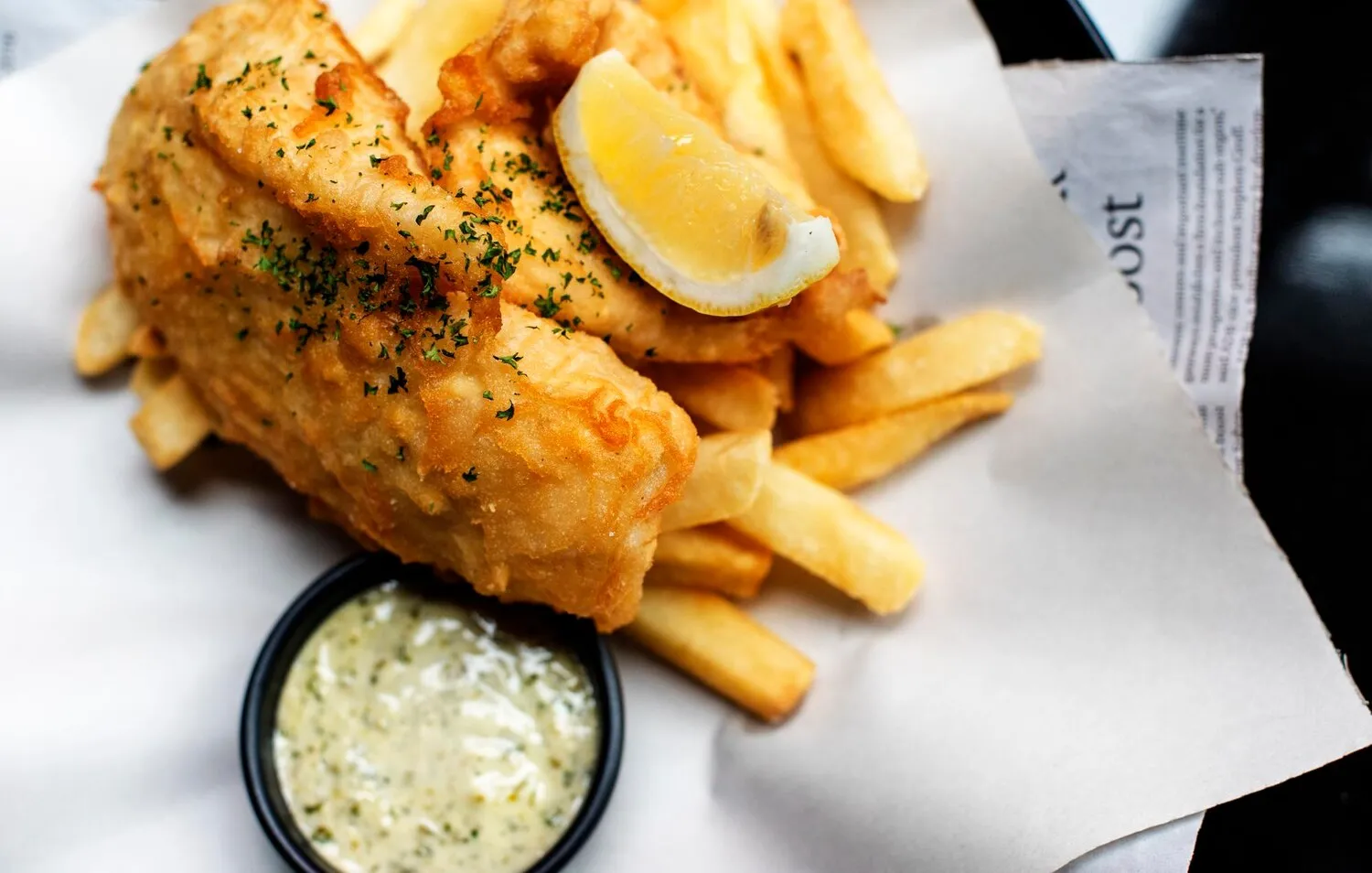
Fish and Chips
A classic English dish featuring battered fish served with fries. Popular option according to reviews.
Nutrition Facts
* The % Daily Value (DV) tells you how much a nutrient in a serving of food contributes to a daily diet. 2,000 calories a day is used for general nutrition advice.
Fish and chips emerged as a culinary fusion in England during the mid-19th century. Fried fish likely originated with Jewish immigrants from Spain and Portugal, while the concept of fried potatoes (chips) arrived from France or Belgium. These separate traditions gradually converged, with enterprising individuals combining them into a convenient and affordable meal for the working class.
Fish and chips is more than just a meal; it's a deeply ingrained part of British culture, representing a symbol of national identity, working-class history, and seaside traditions.
Working-Class Staple
Historically, fish and chips provided a cheap and filling meal for industrial workers, solidifying its association with the working class.
Seaside Heritage
Many fish and chip shops are located in coastal towns, making it a quintessential seaside experience.
National Dish
It's often considered the national dish of England, a comfort food enjoyed by people of all backgrounds.
Social Gathering
The local 'chippy' (fish and chip shop) is often a community hub, a place for social interaction and sharing news.
The dish is primarily defined by the savory, crispy textures and mild, flaky fish complemented by the comforting taste of fried potatoes.
The primary flavor comes from the white fish (typically cod, haddock, or plaice) coated in a crispy batter, usually made from flour, beer (or other raising agent), and seasonings. This provides a satisfying crunch that gives way to the delicate, flaky flesh of the fish. The chips (thick-cut fries) offer a starchy, slightly sweet counterpoint, with their own crispy exterior and soft interior. Malt vinegar is a common condiment, adding a tangy acidity that cuts through the richness of the fried components. Tartar sauce, with its creamy texture and briny pickle relish, offers another flavorful contrast.
Choose the Right Fish
Cod, haddock, and plaice are popular choices for their flaky texture and mild flavor. Ensure the fish is fresh and skinless.
Perfect the Batter
Use cold beer or sparkling water in your batter for a light and airy texture. Don't overmix the batter; a few lumps are fine.
Master the Chips
Use a high-starch potato like Maris Piper or Russet. Double-fry the chips for extra crispness: first at a lower temperature to cook them through, then at a higher temperature to brown them.
Temperature is Key
Maintain the correct oil temperature for both the fish and the chips. Too low, and they'll be greasy; too high, and they'll burn before cooking through.
Drain Thoroughly
After frying, drain the fish and chips on paper towels to remove excess oil.
Explore additional Seafood, Fried dishes and restaurants
Explore Seafood, FriedDiscover top dining spots and culinary experiences in Uppsala.
Explore UppsalaLearn more about the food culture, restaurant scene, and culinary heritage of Sweden.
Explore Sweden